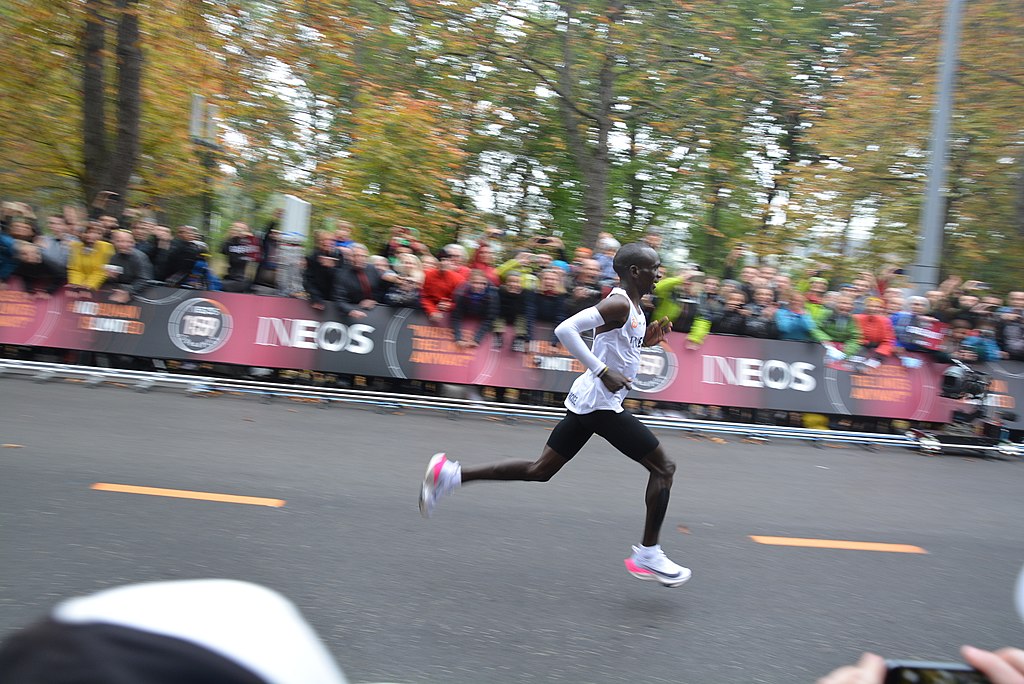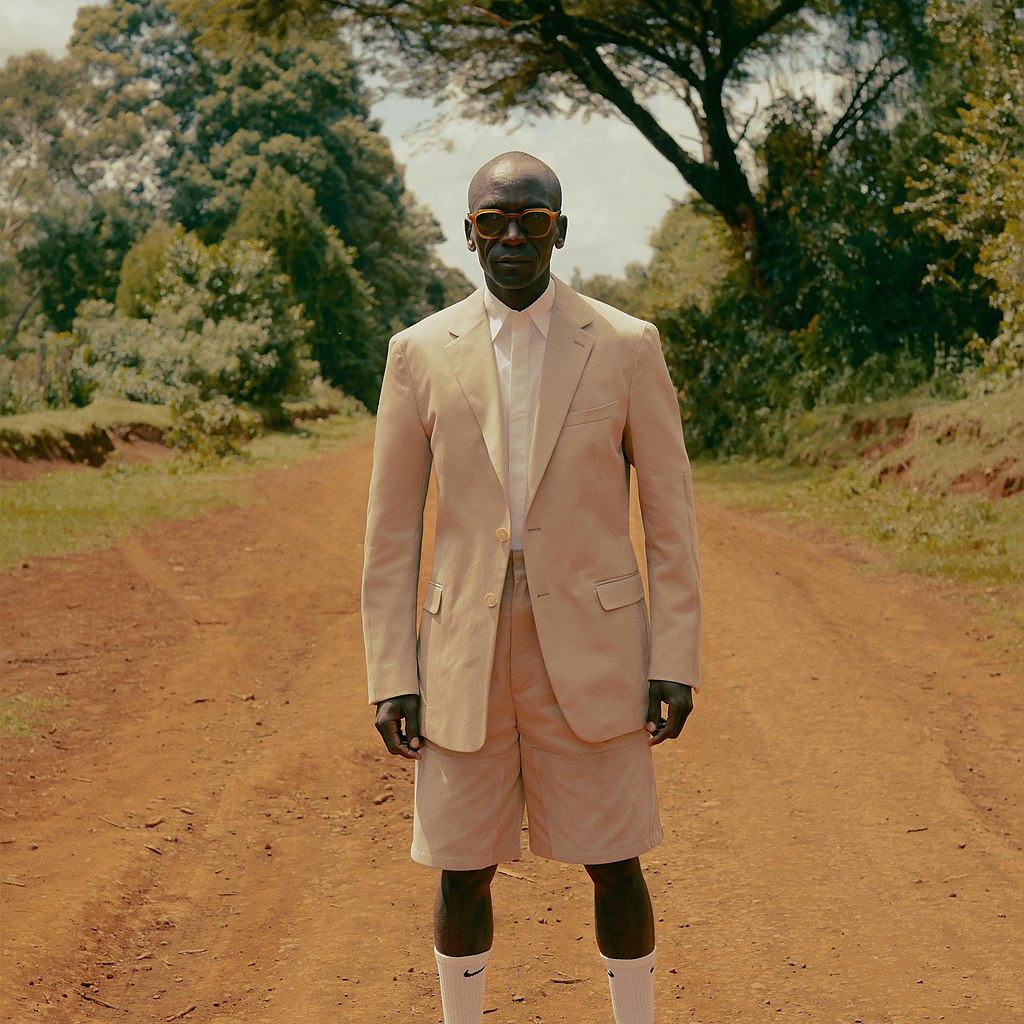Kenyan runner Eliud Kipchoge is commonly hailed as the Greatest Of All Time (GOAT) marathon runner. By successfully defending his Olympic title at Tokyo (Kipchoge also claimed a gold at Rio, 2016), he has only further cemented his credentials as the most exciting distance runner.
Hyperbolic praise usually tends to inspire mistrust of those doing the praising as well as the one being praised. In Kipchoge’s case, however, the hyperbole seems appropriate–in that, it does not really feel hyperbolic to call him the greatest marathon runner of all time if one looks at the feats he’s achieved.
There is of course the INEOS 1:59 run in which Kipchoge became the first human to break the 2-hour barrier in the marathon, a feat that was, until then, considered impossible. Sports scientists were even certain that athletes wouldn’t stand a chance of breaking the 2-hour barrier till late in the 21st century.

Image Credit: Triathlet 79
Enter Kipchoge: The INEOS run was his second attempt to break two hours in the marathon. He was helped by elite, world-class pacemakers (national and continental champions), a meticulously designed running formation to minimize wind resistance, a moving car throwing green light on the road to help the pacers and Kipchoge keep track of the pace required to break two. For these reasons, Kipchoge’s INEOS run, despite being the fastest marathon run by a human, is not considered the official world record time for the distance. Nonetheless, Kipchoge does hold the official world record with a time 2:01:39, which he set in September 2018.
In the context of the INEOS run, there is also the matter of Kipchoge using a customized version of Nike Vaporfly shoes called AlphaFly. Several experts have claimed that the shoes enhance performance a little too much, and that the use of these shoes in competitive races should be considered “technology doping.” For a good introduction to this issue, see this page. However, Kipchoge is an athlete for whom a 2:10:00 marathon counts as a “comfortable run.” In fact, he usually finishes comfortably under 2:05:00, and given his official world record, the INEOS run doesn’t really seem farfetched. Sure, Kipchoge had assistance, but he still did all the running, and he ran at a blistering pace: his slowest 5k split was 14:13, and he averaged 14:10.8 per 5k over the marathon.
This is blistering speed, and the 5k split is fast enough even to finish on the podium of some challenging, elite 5k races.
Though the Olympic marathon was held in Sapporo to avoid the heat and humidity of Tokyo, the conditions there were not exactly friendly. There were several high profile DNFs (Did Not Finish), as many elite marathoners succumbed to Sapporo’s heat as the day wore on. Kipchoge broke clear of the leading pack around 32 kms, leaving American medal hope Galen Rupp far behind. He finished with a lead of over 400 meters, and more importantly, that trademark Kipchoge smile we’ve all become used to.
Kipchoge smiles when he hits what marathoners call the “pain tunnel,” a feature of the race that can either make or break an athlete. At this point, it requires enormous will power and gumption to cajole the mind and the body to perform the repetitive motions that make up running. When Kipchoge beings to smile, it surely means he is dealing with pain, and the smile, he argues, often tricks his body into doing more. It is also the smile that neatly ties in with his mission to inspire 3 billion people to take up running.

Image Credit: Kevin.Clancy414
In a pandemic-ravaged year, Kipchoge, at 36, returned to the Olympics and successfully defended his marathon gold; during his post-race speech, he emphasized his belief that no human is limited, and urged more people to take up running.
Despite winning some of the biggest prize-money marathons, Kipchoge still leads a simple life–almost monastic–in Kenya, putting in the hard yards, doing chores, and eating healthy food. Given his drive, it wouldn’t be a surprise to see Kipchoge pushing for another marathon gold in Paris 2024.